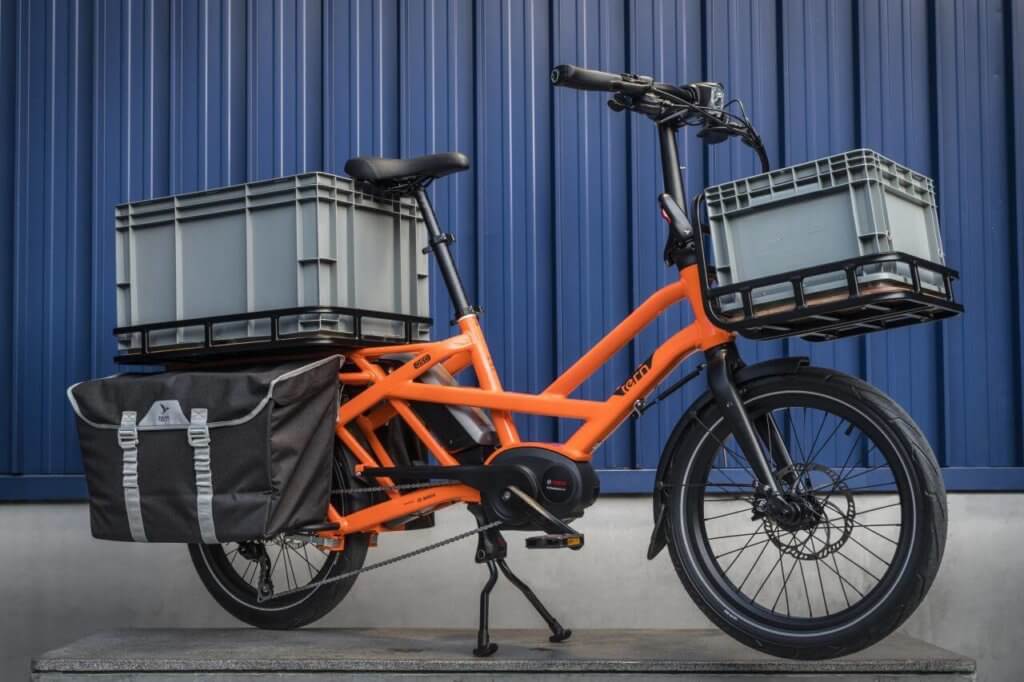The Rise of Cargo Biking
Cargo bikes have been growing in popularity for both personal and commercial transportation needs. Often called cycle trucks or bike trucks, cargo bikes can carry heavy loads and multiple passengers while taking up less space than a vehicle. They provide a sustainable and cost-effective option for many types of trips traditionally made by car or delivery van. In recent years, their use has expanded from Europe and Asia to North American cities.
Advantages for Personal Transportation
For families and individuals who need to transport children, groceries, or haul larger items, cargo bikes can be a great alternative to using a car. They allow cycling with kids or large loads in a safe and convenient way. Cargo bikes tend to be bigger and more stable than regular bicycles, with built-in storage space like saddlebags or a massive front box. Models exist that can transport up to 400 pounds of cargo. By using a cargo bike, one reduces their carbon footprint and engages in active transportation, while also avoiding challenges like finding parking in busy urban areas.
Commercial Uses of Cargo Bike
More businesses are adopting Cargo Bike for local deliveries and services. Compared to vans or trucks, cargo bikes use no fossil fuels, produce zero emissions, and take up minimal street space when parked. This makes them well-suited for navigating dense urban centers with narrow streets and heavy traffic. Many European cities have seen a surge in cargo bike usage by florists, bakeries, coffee shops and other retailers for delivering products within a 3-5 mile radius of their storefronts. Postal and parcel services have also started pilot programs with electric cargo bikes to distribute mail and packages in environmentally friendly way.
New Mobility Options for Communities
Local governments and non-profits are launching cargo bike sharing programs to offer greener transportation alternatives. These are similar to bike sharing schemes but with electric cargo bikes that have carrying capacity. Users can rent the bikes by the hour or day to haul anything from gardening supplies to catering equipment to bulk packages. Such initiatives help reduce single-occupancy vehicle trips and emissions while creating new micro-business opportunities. For example, some systems allow users to register as independent contractors and use the bikes to provide delivery services on contract basis.
Electric Cargo Bikes Gain Popularity
A growing segment is electric cargo bikes, which are pedal-assisted for easier riding even with heavy loads. The electric motor provides a boost uphill or when carrying maximum weight but stops assisting beyond a certain speed, requiring the rider to pedal. This makes cargo biking more accessible to a wider demographic. Electric cargo bikes can carry as much cargo as a small truck while still being far more sustainable and nimble in urban traffic. They are increasingly the transportation mode of choice for hauling goods in eco-conscious cities from Seattle to Amsterdam. With falling battery prices and better motors, electric cargo bikes are poised to become even more prevalent going forward.
Challenges and Room for Improvement
While Cargo Bike address critical transportation needs, there are still some challenges holding back their more widespread adoption. Higher costs compared to regular bicycles can be prohibitive for consumers and businesses. Selection of models is also more limited, with specialized needs and commercial-grade durability required. Infrastructure like protected bike lanes remains inadequate in many areas, posing safety concerns when cargo bikes must share roads with fast vehicle traffic. Standardization of electric assist systems could help broaden the market appeal. With further innovation and supportive policies, cargo bikes have great potential to replace vehicle trips especially for local and urban shipping needs. As fuel prices rise and awareness around sustainability grows, their usage is likely to increase steadily in the coming years.
Policy Measures to Promote Cargo Biking
Some policy initiatives can spur the development of cargo biking as a bonafide transportation mode. Dedicated funding allocation for developing cargo bike infrastructure like secure parking and commercial loading zones encourages their use. Financial incentives such as tax credits for businesses investing in electric cargo fleets help offset higher costs. Comprehensive urban planning should integrate cargo biking needs with requirements of last-mile deliveries. Subsidizing cargo bike sharing systems through public-private partnerships increases access to greener mobility options. Prioritizing cargo bikes for road space and waiving licensing fees creates a level playing field versus trucks. With concerted efforts across many fronts, cities around the world can maximize the benefits of cargo bikes for both personal and commercial transportation.
*Note:
1. Source: Coherent Market Insights, Public sources, Desk research
2. We have leveraged AI tools to mine information and compile it.



